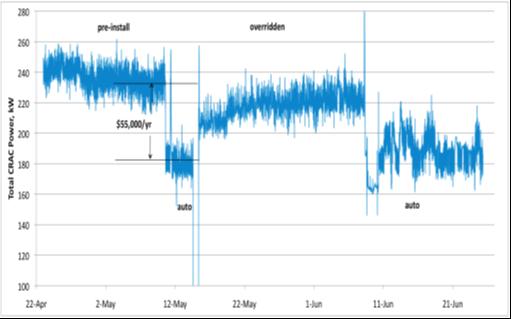The New York Times story “Power, Pollution, and the Internet” highlights a largely unacknowledged issue with data centers, cooling. James Glanz starts with an anecdote describing an overheating problem at a Facebook data center in the early days. The article then goes on to quote: “Data center operators live in fear of losing their jobs on a daily basis, and that’s because the business won’t back them up if there’s a failure.”
It turns out that the issue the author describes is not an isolated incident. As data centers get hotter, denser and more fragile, cooling becomes increasingly critical to reliability. Here are examples of cooling-related failures which have made the headlines in recent years.
Facebook: A BMS programming error in the outside air economizer logic at Facebook’s Prineville data center caused the outdoor air dampers to close and the spray coolers to go to 100%, which caused condensate to form inside servers leading to power unit supply failure.
Wikipedia: A cooling failure caused servers at Wikimedia to go into automatic thermal shutdown, shutting off access to Wikipedia from European users.
Nokia: A cooling failure led to a lengthy service interruption and data loss for Nokia’s Contacts by Ovi service.
Yahoo: A single cooling unit failure resulted in locally high temperatures, which tripped the fire suppression system and shut down the remainder of the units.
Lloyds: Failure of a “server cooling system” brought down the wholesale banking division of the British financial services company Lloyds Banking Group for several hours.
Google: For their 1800-server clusters, Google estimates that “In each cluster’s first year, … there’s about a 50 percent chance that the cluster will overheat, taking down most of the servers in less than 5 minutes and taking 1 to 2 days to recover.”
It is no surprise that data center operators live in fear. What is surprising is that so few operators have mitigated risk through currently-available technology. It’s now possible to non-intrusively upgrade existing data centers with supervisory cooling management systems that compensate for and alert operators to cooling failures. Changes in IT load, environmental conditions, or even human error can quickly be addressed, avoiding what could quickly become an out-of-control incident that results in downtime, loss of availability, and something that’s anathema to colo operators: SLA penalties.
It’s incumbent on facilities operators and business management to evaluate and install the latest technology that puts not only operational visibility, but essential control, in their hands before the next avoidable incident occurs.


